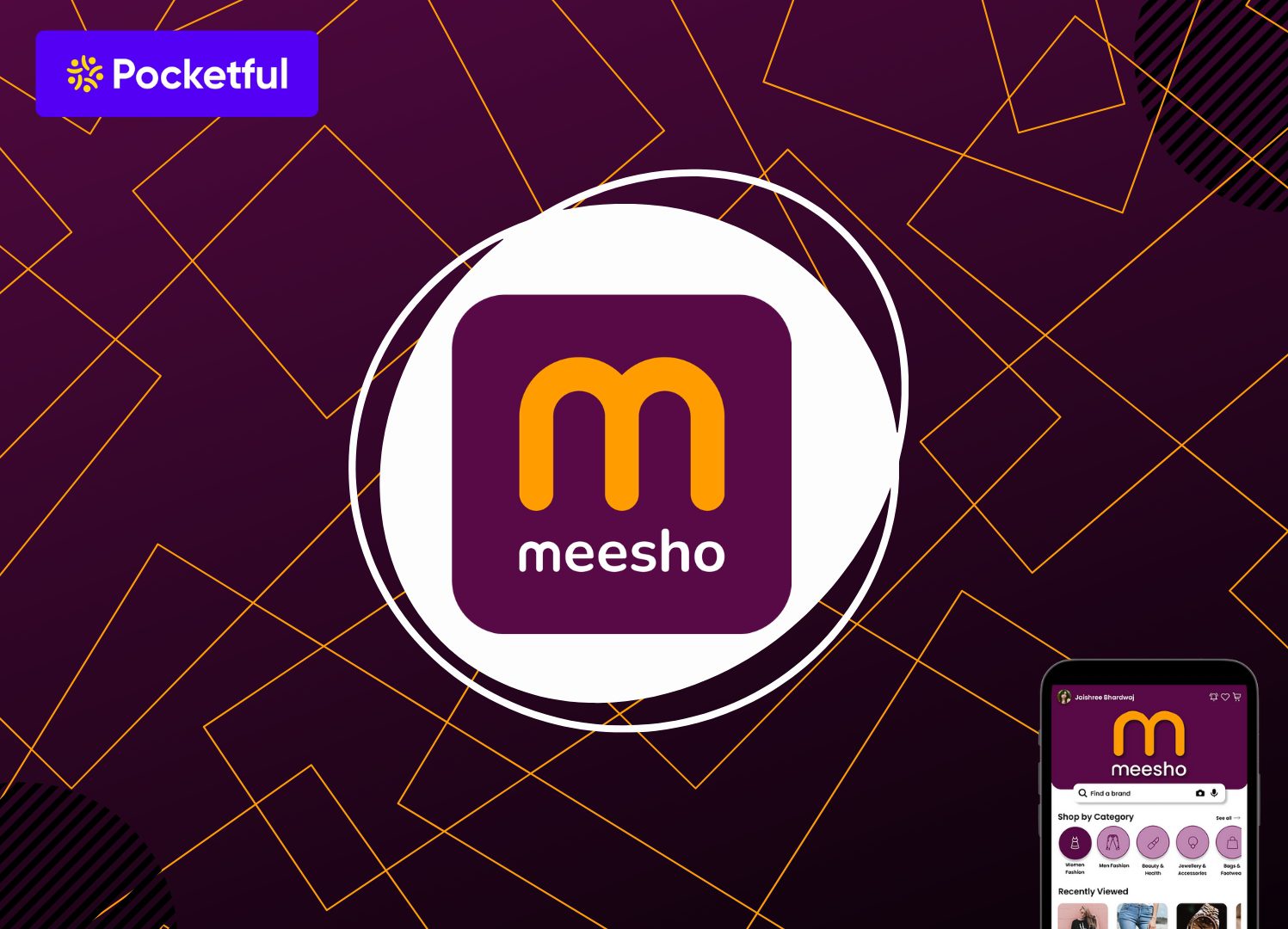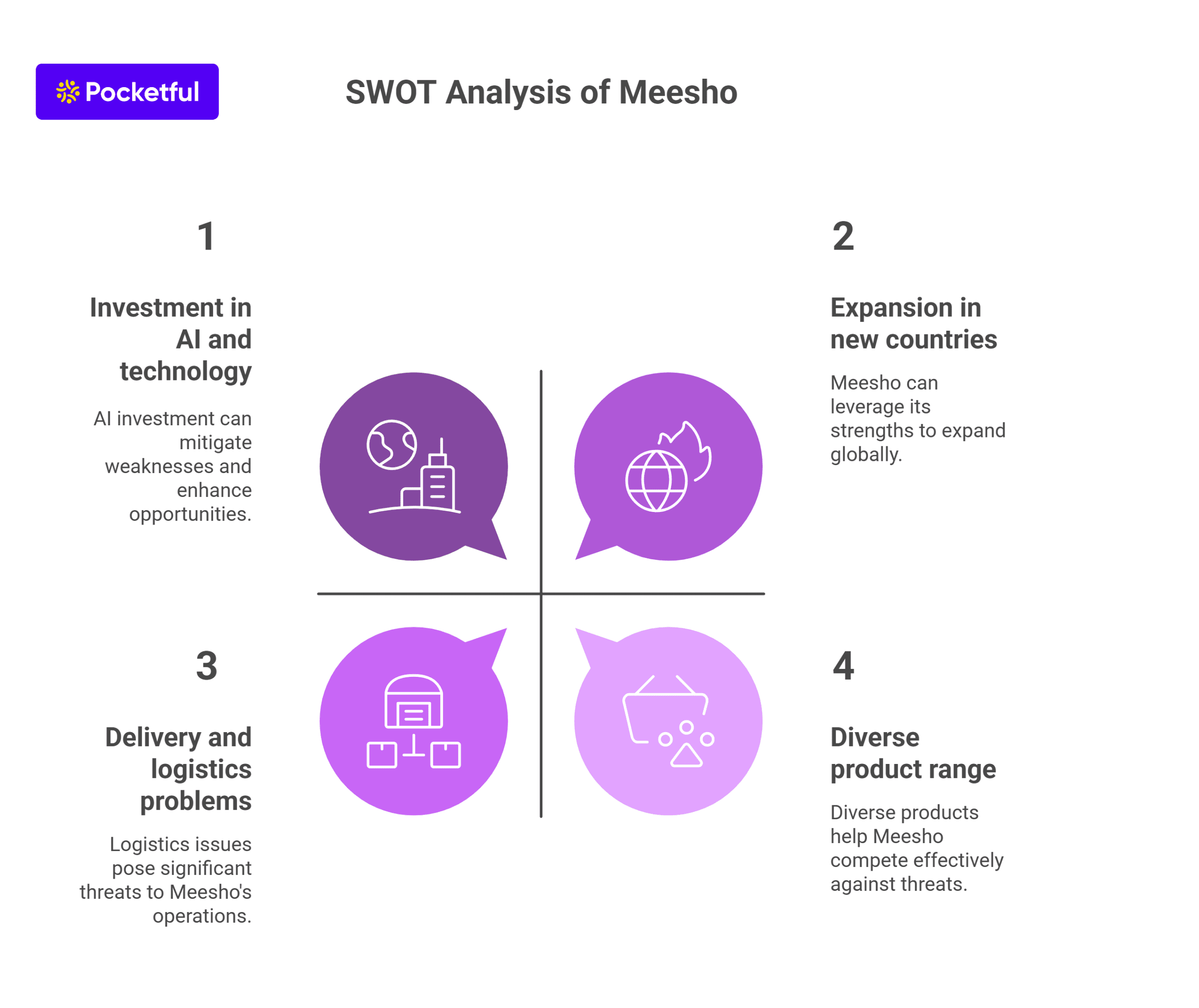| Type | Description | Contributor | Date |
|---|---|---|---|
| Post created | Pocketful Team | May-21-25 | |
| Add new link | Nisha | Sep-05-25 |
Read Next
- Urban Company Case Study: Business Model, Marketing Strategy & SWOT
- Rapido Case Study: Business Model, Marketing Strategy, Financial, and SWOT Analysis
- Trump Tariffs on India: Trade vs Russian Oil
- NTPC vs Power Grid: Business Model, Financials & Future Plans Compared
- Exxaro Tiles Vs Kajaria Tiles
- Adani Power Vs Adani Green – A Comprehensive Analysis
- Blinkit vs Zepto: Which is Better?
- UltraTech Vs Ambuja: Which is Better?
- Tata Technologies Vs TCS: Which is Better?
- Tata vs Reliance: India’s Top Business Giants Compared
- HCL Vs Infosys: Which is Better?
- Wipro Vs Infosys: Which is Better?
- Voltas vs Blue Star: Which is Better?
- SAIL Vs Tata Steel: Which is Better?
- JK Tyre Vs CEAT: Which is Better?
- Lenskart Case Study: History, Marketing Strategies, and SWOT Analysis
- Parle Case Study: Business Model, Marketing Strategy, and SWOT Analysis
- Tata Motors Vs Ashok Leyland: Which is Better?
- Apollo Tyres Ltd. vs Ceat Ltd. – Which is better?
- Bajaj Finserv and Bajaj Finance: Which is Better?
- Blog
- meesho case study
Meesho Case Study – Key Stats, SWOT Analysis & Marketing Strategy

When e-commerce in India meant big brands like Amazon or Flipkart, Meesho chose a different path: social commerce. It is a platform that gives small towns, homemakers and small traders an opportunity to do business online without stock, without capital. Started in 2015, Meesho has become India’s fastest-growing social commerce brand today with over 170 million users. Its zero-commission model connects new entrepreneurs to the mainstream of digital India. In this case study, we will learn Meesho’s business model, marketing strategy, financial statistics, and SWOT analysis.
About Meesho Company
Meesho is an Indian e-commerce platform founded in 2015 by Vidit Aatrey and Sanjay Barnwal. The Bengaluru-based company operates under Fashnear Technologies Pvt. Ltd.
Meesho aims to provide India’s small merchants, especially women and housewives, an opportunity to do business online without any investment. The platform enables the sale of products through social media channels such as WhatsApp, Facebook, Instagram.

Meesho Key Statistics (As of 2025)
| Metric | Data |
|---|---|
| Annual Transacting Users | Approximately 187 million unique users as of December 2024 |
| Total Orders (Apr–Dec 2024) | Around 1.3 billion orders placed |
| Active Sellers | Over 400,000 annual transacting sellers |
| Revenue (FY24) | ₹7,615 crore (~$917 million), a 36% YoY growth |
| Operating Cash Flow (FY24) | Positive ₹232 crore (~$28 million) |
| Website Traffic (March 2025) | Approximately 38.5 million visits |
Business Model of Meesho
Meesho has reinvented the traditional model of e-commerce in India. While platforms like Amazon and Flipkart connect customers and brands directly (B2C model), Meesho’s model is more democratic and society-centric; it is called the C2C (Consumer to Consumer) or Social Commerce model.
How Does Meesho Work?
- Reseller-based model: Anyone (especially women and small merchants) chooses products from the Meesho app and shares them on social media like WhatsApp, Facebook or Instagram. When a customer places an order, Meesho delivers the product directly to the customer. The reseller neither has to maintain stock nor worry about delivery—this is called the inventory-light model.
- Zero-commission policy: Meesho does not charge any commission to sellers, making it affordable for small merchants and new entrepreneurs.
How Does Meesho Earn?
- Logistics and shipping charges: Meesho charges sellers for delivery and keeps a portion of it.
- Advertising services: Sellers can run ads on Meesho to promote their products to more customers, which earns Meesho revenue.
- Float income: Meesho holds the amount received from customers for a few days before paying the sellers, earning interest.
Read Also: Flipkart Case Study- Business Model and Marketing Strategy
Marketing Strategy of Meesho
Meesho has further strengthened its marketing strategy in 2025 by adopting new ways to connect with consumers on both digital and regional levels.
- Meesho’s Marketing Strategy (2025): An Innovative Approach for Digital India Meesho has further strengthened its marketing strategy in 2025 by adopting new ways to connect with consumers at both the digital and regional levels.
- WhatsApp & Social Media: Rather than big campaigns, Meesho empowered everyday users to be brand ambassadors. Using WhatsApp, Facebook, and Instagram, resellers shared products with their own network, making the shopping experience personal, familiar, and direct
- Referral and reseller-based user acquisition: Meesho has successfully added new users through its referral programs. Users will add friends and family to the platform, thereby increasing the user base.
- Regional Content and Advertising in Local Languages: Meesho has strengthened its hold in local markets by presenting ads and content in various Indian languages. This strategy has been particularly effective in regions where English penetration is limited.
- Influencer and Meme Marketing: Meesho has partnered with a variety of influencers, including micro and macro influencers. Additionally, the brand recognition among young consumers has increased by using memes and trending content.
- IPL 2025 Campaign: ‘Apna Cricket Adda’: Meesho launched the ‘Apna Cricket Adda’ campaign during IPL 2025, an effort to unite small businesses and shops during the cricket season.
Financial analysis of Meesho
| Financial Metrics | FY 2024 | FY 2023 | FY 2022 |
|---|---|---|---|
| Revenue (₹ Crores) | ₹7,615 | ₹5,735 | ₹3,240 |
| Net Profit/Loss (₹ Crores) | ₹53 (Adjusted Net Loss) | ₹1,569 (Adjusted Net Loss) | ₹3,248 (Net Loss) |
Orders and User Growth:
- Meesho fulfilled around 1.34 billion orders in FY24, up 30% from the previous year.
- As of April 2025, the company has over 187 million users, that is, one in nine Indians has shopped on Meesho.
Funding and Valuation:
- So far, Meesho has raised a total of $1.36 billion in funding.
- The company raised $270 million in fresh funding in 2025 and its valuation is now close to $4 billion.
Gross Merchandise Value (GMV) and Logistics:
- Meesho’s GMV run rate in FY25 has reached $6.2 billion.
- Valmo, its logistics service, now delivers more than half of the orders itself.
Read Also: Amazon Case Study: Marketing Strategy, Product Portfolio and Pricing Strategy
Major achievements of Meesho
Some of the major achievements of Meesho are listed below:
- Women got a new identity: Meesho is not just a shopping app, but has become a new opportunity for millions of women. So far, about 30 lakh women have started their own small business by joining this platform. The special thing is that many of these women never used to earn anything before – today they are earning from their home, through their phone. This change is not just economic, it is a strong step towards self-reliance.
- App downloads and rapidly growing user base: Meesho’s app has been downloaded more than 50 crore (500 million) times so far, which makes it one of the most used ecommerce platforms in the country. The special thing is that most of its users are from Tier 2 and Tier 3 cities – that is, Meesho has reached the real heart of India.
- Huge number of active customers: By the end of 2024, the number of users who shopped on Meesho in a year had crossed 187 million. If we look at the population of India, every eighth person has bought something from Meesho. Such a large number clearly shows that Meesho has now become a well-known name even in small cities and towns.
- Strong network of Vendors and Sellers: More than 11 lakh sellers are associated with Meesho. About 80% of these people are starting to sell online for the first time. Meesho has connected these small businessmen directly to Digital India, without any shop or big capital. This is the reason why this platform is spreading rapidly in rural and semi-urban areas of India.
These achievements of Meesho are not just statistics – they are part of the change that is making every household a part of Digital India. Whether it is women empowerment, small shopkeepers or the growing trust in online shopping across the country, Meesho has made its mark on every front.
Read Also: Blinkit vs Zepto: Which is Better?
SWOT Analysis of Meesho

Strengths
- Simple model of social commerce: Meesho has given thousands of small merchants and housewives the opportunity to start an online shop without any major investment using platforms like WhatsApp, Facebook, and Instagram.
- Seller network spread across every city: More than 11 lakh sellers are associated with Meesho in more than 5,000 cities of India, giving the brand reach to remote areas.
- Diverse product range: From fashion to electronics and household products Meesho offers a lot of options in every category, which forces customers to come back again and again.
- User-friendly app interface: Its mobile application is so simple to use that even a first-time online shopper can easily use it.
Weaknesses
- Quality imbalance: Due to supply of goods from different sellers, the quality of the products is not the same every time, which increases customer complaints.
- Delivery and logistics problems: Problems like not getting timely delivery and delay in return pickup are common in small towns and villages.
- Limitations of brand identity: Meesho’s identity is still not that strong in front of ecommerce giants like Flipkart and Amazon.
- Dependence on only one country: Meesho is currently completely dependent on the Indian market, due to which international expansion remains a challenge.
Opportunities
- Opportunity to expand in new countries: Meesho can easily implement its business model in markets like South Asia, Africa, and Latin America, where social commerce is still new.
- Investment in AI and technology: With tools like artificial intelligence and machine learning, Meesho can further improve its user experience.
- Entry into new categories: By entering areas like grocery, healthcare and digital services, Meesho can increase its revenue and user base.
- Eco-friendly initiatives: By focusing on sustainable packaging and eco-friendly products, Meesho can create an image of a responsible brand.
Threats
- Tough competition: The competition from other platforms like Flipkart, Amazon’s GlowRoad forces Meesho to update its strategy frequently.
- Changes in government regulations: Changes in laws or data policies related to e-commerce can affect Meesho’s operations.
- Effect of economic instability: If a recession-like situation occurs in the country, customers may reduce spending, which affects sales.
- Cybersecurity threat: Being a digital platform, there is always a risk of data theft or cyber attack.
Meesho has given a new direction to social commerce by making it popular in India. Now it needs to strengthen its existing model, invest in technology and also enter the international level by increasing the brand value.
Read Also: Blinkit Case Study: Business Model, Financials, and SWOT Analysis
Conclusion
Meesho has set a new benchmark in the field of social commerce in India. In just a few years, it has moved away from the traditional e-commerce model and created a platform where millions of women and small sellers are able to run their online business without capital investment. By 2024, the company has significantly increased its revenue and has also succeeded in reducing losses.
Going forward, Meesho’s focus will be on improving technology, customer experience and logistics. Meesho can be seen as a role model for upcoming companies in emerging markets, especially where small businesses need digital support.
Frequently Asked Questions (FAQs)
What is Meesho’s business model?
Meesho works on the social commerce model where people can sell products through social media without keeping any stock.
How does Meesho earn revenue?
Meesho earns revenue from logistics and shipping fees, advertising services, and float income.
Is Meesho profitable in 2025?
In FY2024, Meesho recorded a revenue of ₹7,615 crore and a net loss of ₹53 crore.
How is Meesho different from Amazon and Flipkart?
Meesho focuses on social selling and small sellers, while Amazon and Flipkart are traditional e-commerce.
Can anyone become a seller on Meesho?
Yes, anyone can become a seller on Meesho with just a GST number and a bank account.
Disclaimer
The securities, funds, and strategies discussed in this blog are provided for informational purposes only. They do not represent endorsements or recommendations. Investors should conduct their own research and seek professional advice before making any investment decisions.
Article History
Table of Contents
Toggle